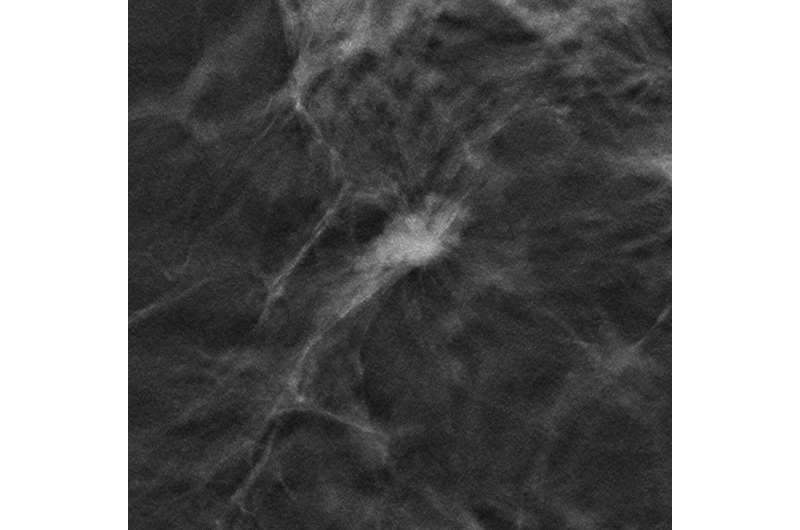This article has been reviewed according to Science X's editorial process and policies. Editors have highlighted the following attributes while ensuring the content's credibility:
fact-checked
peer-reviewed publication
trusted source
proofread
Early breast cancer detection: Further TOSYMA analysis underpins advantages of DBT+SM use

Early detection of disease is considered positive—but what if it finds "too much?" While early diagnosis can improve the chances of recovery, early detection can also have a downside. After all, not everything that is found would have become life-threatening in the course of the disease.
The TOSYMA study, the world's largest randomized diagnostic superiority study on early breast cancer detection, has now investigated whether the innovative DBT+SM method for early breast cancer detection also has such an effect—results suggest advantages of the approach over the screening standard by finding more early tumor stages of tumor grades 2 and 3.
In diagnostics, finding more is not automatically better. Rather, it is about finding the right thing—especially in the case of such dangerous diseases as cancer. This is where early detection comes into play, but it can also have unwanted side effects: For example, there is a risk of also discovering non-aggressive tumors that lead to treatment but would not have substantively impaired quality of life or become life-threatening in the course of the disease.
TOSYMA is also about early detection. The study identified the goal of investigating and improving the systematic early detection of invasive breast cancer. The researchers at the University of Münster, who are managing the mammoth project, have now published new results from TOSYMA in the journal Radiology. These demonstrate the advantages of the innovative diagnostic approach.
A combination of DBT—short for Digital Breast Tomosynthesis—and Synthetic 2D Mammography (SM) was used for the almost 100,000 TOSYMA study participants. The interdisciplinary study group led by Prof. Walter Heindel, Director of the Clinic for Radiology at the University Hospital Münster, compared the data obtained with the combined procedure—known as DBT+SM—with that from conventional screening with digital mammography (DM).
The result: DBT+SM leads to the detection of significantly more invasive breast cancers compared to the conventional DM procedure. However, this does not necessarily mean that women's health is improved—the keyword here is overdiagnosis. In other words, it has been shown that DBT+SM "finds" breast cancer better—but the task now was to investigate whether this can be expected to actually lead to an improvement for the affected breast cancer patients.
In an exploratory subanalysis, Prof. Stefanie Weigel, Prof. Walter Heindel and Prof. Hans-Werner Hense examined which tumors are frequently detected at an earlier stage of breast cancer—and found that DBT+SM screening can detect relevant tumors, i.e., those that—in contrast to less aggressive variants—are potentially relevant for a reduction in breast cancer mortality.
Prof. Weigel concludes, "From the results of the subanalysis, we conclude that the higher rate of early tumor stages of tumor grades 2 and 3 through the use of DBT+SM could increase the screening effect with regard to breast cancer mortality"—another 'plus point' for DBT+SM."
The next step is already in progress: This year, data from the cancer registries of North Rhine-Westphalia and Lower Saxony will be evaluated for follow-up in order to further examine the screening effect of DBT+SM compared to the previous screening standard. The TOSYMA project began in 2016, comprises 17 screening units in Germany. The current funding period runs until 2025.
More information: Stefanie Weigel et al, Digital Breast Tomosynthesis versus Digital Mammography for Detection of Early-Stage Cancers Stratified by Grade: A TOSYMA Subanalysis, Radiology (2023). DOI: 10.1148/radiol.231533




















